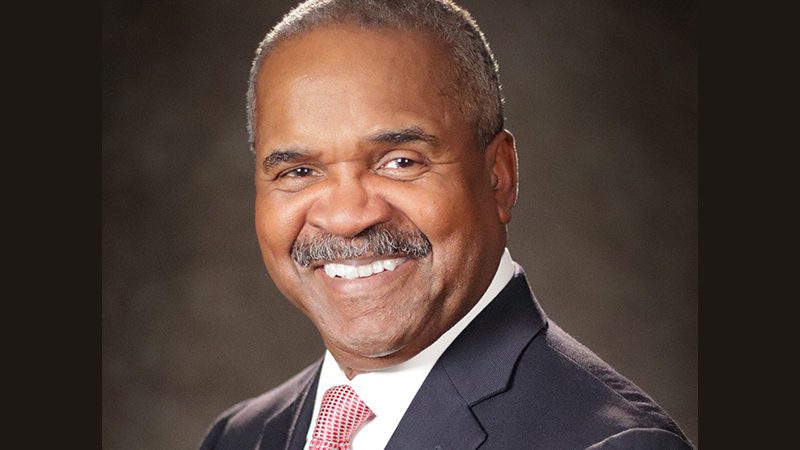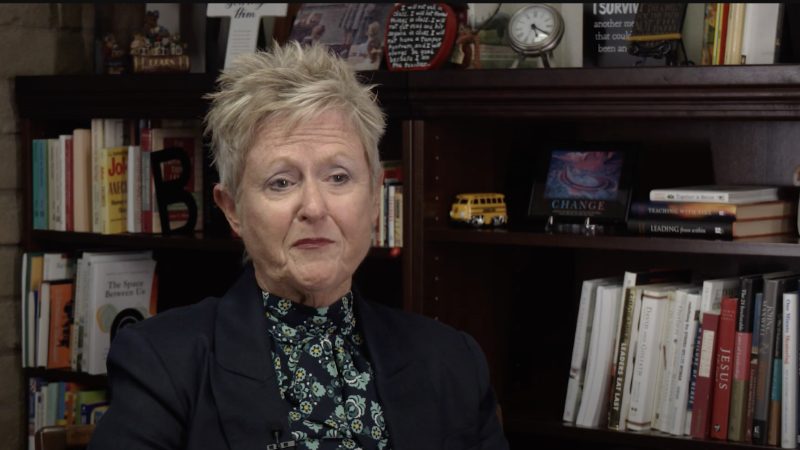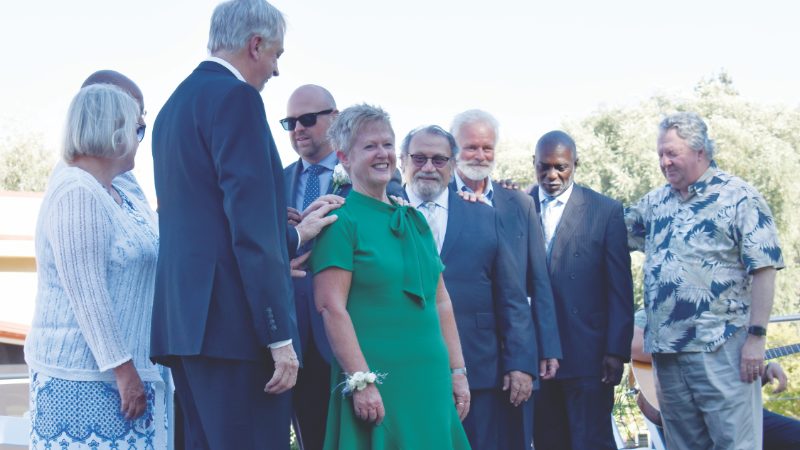
Say the word “Pathfinders” to an adult Seventh-day Adventist and an interesting thing might happen to their face. A faraway look captures the eyes as a gentle smile lifts the corners of the mouth.
What you won’t see are the memories flooding that person’s mind: visions of busy club meetings filled with young, happy faces; camping adventures in the great and mysterious out of doors; exciting learning experiences as new skills are introduced; and the sight and feel of carefully pressed uniforms adorned with sashes, buttons, and patches. You also won’t hear the echoes of special songs being sung and eager voices reciting Spirit-based laws and pledges: words that helped form the very foundation of generations of lives.
While it may seem impossible to imagine today, there was a time when the Pathfinder Club ministry didn’t exist within Adventism. There were no songs to sing, laws and pledges to recite, honors to earn, busy meetings to attend, camping adventures to enjoy, or uniforms to press.
Pathfinder Aim
The Advent Message to all the world in my generation
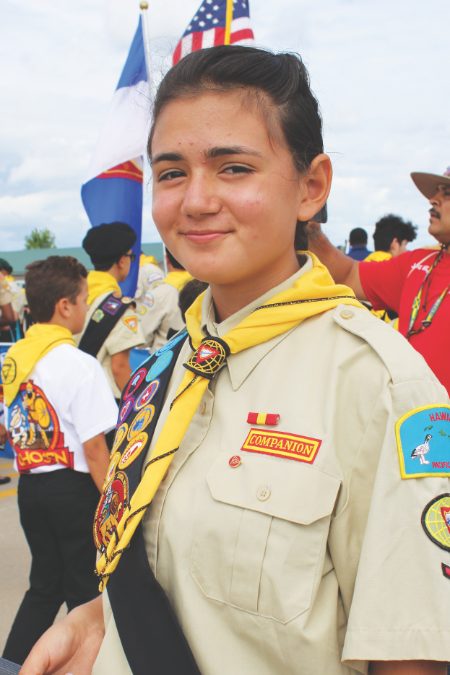


What type of individual looked around and decided that such an outreach needed to be created? As is often the case, such a realization took root in the minds of young people themselves, like the boy who faced an angry bully carrying a whip.
John was ten years old when he first started studying the Bible in earnest. He and his family joined the growing movement of “Millerites”—those who followed the teachings of reluctant evangelist William Miller. Small groups of such believers would often gather each Wednesday evening in their community to study their Bibles. John eagerly attended such activities and was thrilled by what he heard from God’s Word.
One evening, after a hard day of work on the family farm, John was walking with an older gentleman, a Mr. Davis, to just such a meeting when they came to a small bridge spanning a rushing stream. Suddenly, a group of men appeared, their leader carrying a long, thick bull whip. He announced that he was going to “whip some sense” into Mr. Davis because of his crazy Millerite beliefs.
When John saw what was happening, he immediately stepped forward, positioning himself between the would-be attacker and his Bible-believing companion. “If you’re going to hurt Mr. Davis,” he said, “you’ll have to hurt me first.”
The bully, too ashamed to injure a young boy, relented and allowed the two to continue their journey.
John Nevins Andrews grew up carrying that fire for God in his heart, serving the church in many ways and in many places, becoming a missionary to Europe, where he died from tuberculosis in 1883 at the age of 54. All during his life, he had a special burden for young people and worked tirelessly to meet their needs within the fledgling Seventh-day Adventist Church.


Pathfinder Pledge
By the grace of God,
I will be pure and kind and true.
I will keep the Pathfinder Law.
I will be a servant of God
and a friend to man.

Youthful fervor
This type of youthful fervor—this brand of dedication—also made itself known in the heart of 14-year-old Luther Warren. So passionate was he on the subject of youth involvement that in 1879 he helped organize the very first society in the Adventist Church dedicated solely to reaching the spiritual needs of his peers. He then spent his entire life working on behalf of that particular age group. He never forgot what it was like to be in their shoes—to face what they faced, needing to know that there was something more to life than the survival-of-the-fittest mentality that drove most of the people, young and old, in this world.
Both Luther and John also realized that the next generation of Adventist boys and girls desperately needed such guidance and encouragement. Their efforts laid the foundation for organizations to come, such as Missionary Volunteer Societies (MV), and church-created magazines like Our Little Friend, Junior Guide, Primary Treasure, and The Youth’s Instructor. Generations of Seventh-day Adventist children and teens have benefited greatly from their vision.
Starting in 1901, juniors and early teens played an integral part in the actual development and function of many Adventist youth programs. But it wasn’t always an easy task. They faced widespread apathy within the church. “Youth are to be seen and not heard” they were told again and again. “You can’t trust the young. They’re too wild to be in charge of anything.” But in their hearts they carried the same flame of commitment to the cause of God as did Luther Warren and John Andrews.
That same year, the General Conference put skin in the game by providing official recognition to the youth movement, and ministry to the young became an integral part of the Adventist organization.
Pathfinder Motto
The love of Christ compels us.
California connection
By the late 1920s, many clubs and organizations for young people had been formed across the country, but there was no single ministry of like-minded individuals existing. All of that began to change when, in 1927, John McKim and Willa Steen of Anaheim, California, formed a club with the exciting name “Pathfinders.” This was followed, in 1930, by an additional club in nearby Santa Ana. There’s record of another such club in Loma Linda in 1937, as well as one in Glendale.
Then, in 1946, John H. Hancock, youth director for the Southeastern California Conference, launched a Pathfinder Club in Riverside. He created the Pathfinder triangle emblem and assigned a ministerial student, Francis Hunt, to keep things going while he and his wife, Helen, taught honors classes.
The following years were busy ones in the Pacific Union, with its Missionary Volunteer Council—made up of all the youth directors of the union conferences—holding leadership conventions and brainstorming Christ-centered activities for young people. Henry T. Bergh, in the Central California Conference, launched 23 clubs in his territory!
In 1950, the General Conference took note of the success of the Pacific Union’s Missionary Volunteer director and his conference directors, and the GC adopted their program, officially naming it “Pathfinder Club.” It became a worldwide organization of the Adventist Church. The rest, as they say, is history.
Pathfinders is now a global ministry, impacting the lives of thousands each year. Church history reveals that young people prove their greatest value when they are both seen and heard.
Find a need and fill it
Which begs the question, “Do we still need something as time- and resource-consuming as Pathfinder Clubs in our church today?” Many would argue that such social gatherings may have lost their luster in this age of YouTube, Instagram, and distance learning. If a young person wants to know the difference between a granny knot and a square knot, there’s probably a YouTube channel dedicated solely to that subject.
But other voices are sounding a welcoming call as well as a warning. Here’s what the leaders of the General Conference Adventist Youth Ministries say on their website concerning the philosophy of Pathfinders today:
While the Pathfinder Club exists primarily for youth, one of its basic purposes is to also bring together parents and church members through active involvement with the club and its members. Here the so-called generation gap disappears as young and old worship, work, and play together in a bond of common experience. Meaningful relationships are forged as leaders and counselors join with Pathfinders in sharing, building confidence, and working together.
The whole philosophy of Pathfindering is built on the premise that ‘children learn best by example, rather than precept.’ As they see leaders and parents model spiritual and social values, they too will aspire to develop high moral principles, loving and caring attitudes, and determination to excel in all their various pursuits.
Young people learn most effectively in a positive, happy, and secure atmosphere. The attitude of the club leaders is therefore a vital ingredient in guaranteeing the success and effectiveness of this ministry to youth. A failure to listen to and understand the needs of the young people will only erect barriers to real spiritual growth and development and may prove to be a contributing factor in making the church and its mission unattractive to the youth.1

The Pathfinder Law
The Pathfinder Law is for me to:
- Keep the morning watch.
- Do my honest part.
- Care for my body.
- Keep a level eye.
- Be courteous and obedient.
- Walk softly in the sanctuary.
- Keep a song in my heart.
- Go on God's errands.
Personal insights
If you’ll allow this writer a moment of faraway gazing and memory flooding, my own journey through life includes many a Tuesday evening in the old James Street Adventist church in Syracuse, New York, a lifetime ago. There, cloistered with children my own age, I learned that church, school, and home can be bound together with timeless ties that transcend the world and its allures. I discovered that I was part of something valuable—something that could help me gain skills in subjects as diverse as rock collecting, radio building, bird identification, bread making, photography, and, yes, knot tying—all the while coming face to face with adults who reflected God’s love in word and deed.
Our camping trips demonstrated to me in ways no YouTube or Instagram video could that God is best seen in nature and in the caring attitude of church volunteers who made all the fun and learning possible.
Yes, I happily recited the Pathfinder motto, aim, pledge, and laws. Yes, those words echo in my mind to this day. Yes, I owe more than I can say to the people in my church who had the foresight and the sacrificial willingness to quietly slip into my life and offer guidance that I didn’t realize I needed until years later.
Pathfinders isn’t just about earning honors, learning skills, and socializing. It’s about helping to prepare generations of young people for the harsh reality that will come into their lives. It’s about allowing children to see that Pathfinder pledge and motto being lived out in the lives of those in charge of their club and their church organization.
Yes, the children in your church need a Pathfinder Club. So do the adults.
_____________________________
1“Philosophy & Objectives,” Adventist Youth Ministries, https://www.gcyouthministries.org/ministries/pathfinders/philosophy-objectives/.
Additional sources of information:
Nace una misión


Diga la palabra «Conquistadores» a un adulto adventista y algo interesante podría sucederle en la cara. Una mirada lejana capturará sus ojos mientras una sonrisa amable le levantará la comisura de los labios.
Lo que no verá son los recuerdos que inundan la mente de esa persona: visiones de reuniones de clubes llenas de rostros jóvenes y felices; aventuras de campamento en el gran y misterioso aire libre; experiencias de aprendizaje emocionantes a medida que se introducen nuevas habilidades; y la vista y el tacto de uniformes cuidadosamente planchados adornados con fajas, botones y parches. Tampoco escuchará los ecos de los cantos especiales y las voces ansiosas que recitan las leyes y los votos basados en el Espíritu: palabras que ayudaron a forjar el fundamento mismo de generaciones.
Aunque parezca imposible de imaginarlo, hubo un tiempo en que el ministerio del Club de Conquistadores no existía dentro del adventismo. No había cantos, leyes y votos que recitar, honores que ganar, reuniones a las que asistir, aventuras de campamento que disfrutar o uniformes que planchar.
Blanco del Conquistador
El mensaje adventista al mundo en mi generación.
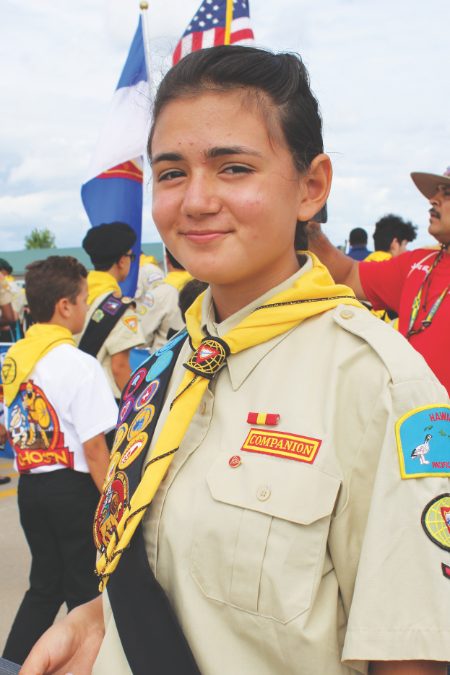


¿Qué tipo de persona miró a su alrededor y decidió que era necesario crear tal ministerio? Como suele ser el caso, tal comprensión se arraigó en las mentes de los mismos jóvenes, como el niño que se enfrentó a un matón enojado que llevaba un látigo.
John tenía diez años cuando empezó a estudiar la Biblia en serio. Él y su familia se unieron al creciente movimiento de los «milleritas», quienes seguían las enseñanzas del reacio evangelista William Miller. Pequeños grupos de tales creyentes a menudo se reunían cada miércoles por la noche para estudiar la Biblia. John asistía con entusiasmo a tales actividades y se emocionaba con lo que oía de la Palabra de Dios.
Una noche, después de un arduo día de trabajo en la granja de la familia, John caminaba con un hombre mayor, un tal Mr. Davis, hacia una reunión de ese tipo cuando llegaron a un pequeño puente que cruzaba un arroyo caudaloso. De repente, apareció un grupo de hombres cuyo líder llevaba un largo y grueso látigo. Anunció que iba a «infundir algo de sentido» en Mr. Davis debido a sus locas creencias milleristas.
Cuando John vio lo que estaba pasando inmediatamente dio un paso adelante, colocándose entre el posible atacante y su compañero creyente en la Biblia. «Si va a hacerle daño Mr. Davis», le dijo, «primero tendrá que darme a mí».
El matón, demasiado avergonzado para herir a un niño, cedió y permitió que los dos continuasen su viaje.
John Nevins Andrews creció llevando ese fuego por Dios en su corazón, sirviendo a la iglesia de muchas maneras y en muchos lugares, convirtiéndose en misionero en Europa, donde murió de tuberculosis en 1883 a la edad de 54 años. A lo largo de su vida tuvo un interés especial por los jóvenes y trabajó incansablemente para satisfacer sus necesidades dentro de la incipiente Iglesia Adventista.


Voto del Conquistador
Por la Gracia de Dios
seré puro, bondadoso y
leal, guardaré la ley del
Conquistador, seré siervo de
Dios y amigo de todos.

Fervor juvenil
Ese tipo de fervor juvenil, ese tipo de dedicación, también se dio a conocer en el corazón de Luther Warren, de 14 años. Tan apasionado era el tema de la participación de los jóvenes que en 1879 ayudó a organizar la primera sociedad de la Iglesia Adventista dedicada exclusivamente a satisfacer las necesidades espirituales de sus compañeros. Pasó después toda su vida trabajando con jóvenes de esa edad en particular. Nunca olvidó lo que era estar en sus zapatos, enfrentar lo que ellos enfrentaban, necesitando saber que había algo más en la vida que la mentalidad de supervivencia del más apto que impulsaba a la mayoría de las personas, jóvenes y mayores, en este mundo.
Tanto Luther como John también se dieron cuenta de que la próxima generación de jóvenes y señoritas adventistas necesitaba desesperadamente esa guía y aliento. Sus esfuerzos sentaron las bases para las organizaciones venideras, como la Sociedad de Jóvenes Misioneros Voluntarios (MV), y revistas creadas por la iglesia como Our Little Friend, Junior Guide, Primary Treasure, y The Youth’s Instructor. Generaciones de niños y adolescentes adventistas se han beneficiado enormemente de su visión.
A partir de 1901 los jóvenes y los primeros años de la adolescencia desempeñaron un papel integral en el desarrollo y la función de muchos programas juveniles adventistas. Pero no siempre fue una tarea fácil. Se enfrentaron a una apatía generalizada dentro de la iglesia. «Los jóvenes son para ser vistos y no para ser escuchados», se les decía una y otra vez. «No se puede confiar en los jóvenes. Son demasiado inestables para estar a cargo de nada». Pero en sus corazones llevaban la misma llama de compromiso con la causa de Dios que Luther Warren y John Andrews.
Ese mismo año la Conferencia General se comprometió al proporcionar un reconocimiento oficial al movimiento juvenil y el ministerio a los jóvenes se convirtió en una parte integral de la organización adventista.
Lema del Conquistador
El amor de Cristo nos costriñe.
Conexión con California
A finales de la década de 1920 se habían formado muchos clubes y organizaciones para jóvenes en todo el país, pero no existía un ministerio para personas con ideas afines. Todo eso comenzó a cambiar cuando, en 1927, John McKim y Willa Steen de Anaheim, California, formaron un club con el emocionante nombre de «Conquistadores» [Pathfinders]. Eso fue seguido, en 1930, por un club adicional en la cercana Santa Ana. Hay constancia de otro club de ese tipo en Loma Linda en 1937, así como de otro en Glendale.
Después, en 1946, John H. Hancock, director de jóvenes de la Southeastern California Conference, fundó un Club de Conquistadores en Riverside. Creó el emblema del triángulo de los Conquistadores y asignó a un estudiante ministerial, Francis Hunt, para que mantuviese las cosas en marcha mientras él y su esposa, Helen, impartían clases de honores.
Los años siguientes fueron muy ocupados en la Pacific Union, con su Concilio de Misioneros Voluntarios, compuesto por todos los directores de jóvenes de las conferencias de la unión, celebrando convenciones de liderazgo y teniendo una tormenta de ideas sobre actividades centradas en Cristo para los jóvenes. Henry T. Bergh, en la Central California Conference, ¡inició 23 clubes en su territorio!
En 1950, la Conferencia General tomó nota del éxito del director de Misioneros Voluntarios de la Pacific Union y sus directores en las conferencias, y la Conferencia General adoptó el programa, llamándolo oficialmente «Club de Conquistadores». Se convirtió en una organización mundial de la Iglesia Adventista. El resto, como se suele decir, es historia.
Los Conquistadores son ahora un ministerio global, impactando las vidas de miles de personas cada año. La historia de la Iglesia revela que los jóvenes demuestran su mayor valía cuando son vistos y escuchados.
Encontrar una necesidad y cumplirla
Lo cual plantea la pregunta: «¿Necesitamos aun algo que consuma tanto tiempo y recursos como los Clubes de Conquistadores?» Muchos argumentarán que tales reuniones sociales pueden haber perdido su brillo en esta era de YouTube, Instagram y el aprendizaje a distancia. Si un joven quiere saber la diferencia entre un nudo calabrote y un nudo roseta, probablemente haya un canal de YouTube dedicado exclusivamente a ese tema.
Pero otras voces están haciendo sonar un llamado de bienvenida lo mismo que una advertencia. Eso es lo que dicen los líderes de los Ministerio Juvenil Adventista de la Conferencia General en su sitio web con respecto a la filosofía de los conquistadores:
Si bien el Club de Conquistadores existe principalmente para los jóvenes, uno de sus propósitos básicos es también reunir a los padres y miembros de la iglesia a través de la participación activa en el club y sus miembros. Aquí, la llamada brecha generacional desaparece a medida que jóvenes y mayores adoran, trabajan y juegan juntos en un vínculo de experiencia común. Se forjan relaciones significativas a medida que los líderes y consejeros se unen a los Conquistadores para compartir, desarrollar confianza y trabajar juntos.
Toda la filosofía de los Conquistadores se basa en la premisa de que «los niños aprenden mejor con el ejemplo, en lugar de con los preceptos». Al ver que los líderes y los padres son modelos de valores espirituales y sociales, ellos también aspirarán a desarrollar principios morales elevados, actitudes amorosas y afectuosas, y determinación de sobresalir en todas sus diversas actividades.
Los jóvenes aprenden de manera más efectiva en un ambiente positivo, feliz y seguro. Por lo tanto, la actitud de los dirigentes de los clubes es un ingrediente vital para garantizar el éxito y la eficacia de ese ministerio a los jóvenes. El hecho de no escuchar y comprender las necesidades de los jóvenes sólo erigirá barreras para el verdadero crecimiento y desarrollo espiritual y puede resultar un factor que contribuya a hacer que la iglesia y su misión sean poco atractivas para los jóvenes.1

La Ley del Conquistador
La Ley del Conquistador me orden:
- Observar la devoción matutina.
- Cumplir fielmente con mi parte.
- Cuidar mi cuerpo.
- Tener una conciencia limpia.
- Ser cortés y obediente.
- Andar con reverencia enla casa de Dios.
- Tener una canción en el corazón.
- Ir donde Dios me mande.
Perspectivas personales
Si le permites a este escritor un momento de reflexión y remembranza, mi propia experiencia a través de la vida incluye muchos martes por la noche en la antigua iglesia adventista de James Street en Syracuse, Nueva York, hace toda una vida. Enclaustrado con niños de mi edad, aprendí que la iglesia, la escuela y el hogar pueden estar unidos con lazos eternos que trascienden al mundo y sus encantos. Descubrí que era parte de algo valioso, algo que podría ayudarme a adquirir habilidades en temas tan diversos como la recolección de rocas, la construcción de radios, la identificación de aves, la elaboración de pan, la fotografía y, sí, el atado de nudos, al mismo tiempo que me enfrentaba cara a cara con adultos que reflejaban el amor de Dios con palabras y con hechos.
Nuestros viajes de campamento me demostraron de una manera que ningún video de YouTube o Instagram pudiese haberlo hecho que Dios se ve mejor en la naturaleza y en la actitud cariñosa de los voluntarios de la iglesia que hicieron posible toda esa diversión y el aprendizaje.
Sí, recité con gusto el lema, el objetivo, el voto y la ley de los Conquistadores. Sí, esas palabras resuenan en mi mente hasta el día de hoy. Sí, le debo más de lo que puedo decir a las personas de mi iglesia que tuvieron la previsión y la voluntad de sacrificio para estar silenciosamente en mi vida y ofrecerme una guía que no me di cuenta de que necesitaría hasta años después.
Los Conquistadores no solo tienen que ver con obtener honores, aprender habilidades y socializar. Se trata de ayudar a preparar a generaciones de jóvenes para la dura realidad que llegará a sus vidas. Se trata de permitir que los niños vean que la promesa y el lema de los Conquistadores se viven en la vida de los que están a cargo de su club y de la organización de su iglesia.
Sí, los niños de su iglesia necesitan un Club de Conquistadores. Lo mismo ocurre con los adultos.
_____________________________
1 “Filosofía y Objetivos”, Ministerios Juveniles Adventistas, https://sdawest.pub/3Usa8Ed.
Fuentes de información adicionales:
https://www.clubministries.org/pathfinders/pathfinders-history/
https://www.gcyouthministries.org/ministries/pathfinders/philosophy-objectives/
Read the special report published in the May Recorder


